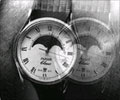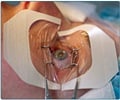Treatment and Prognosis
Regular eye examinations, low vision aids and occupational counseling are helpful in patients with Best disease.
Treatment:
- Unfortunately, there is no specific treatment for Best disease. Laser treatment and injection of a medication called bevacizumab into the eye has been used in some cases.
- Family members should be screened for the condition and genetic counseling should be provided.
- Occupational counseling should also be provided on diagnoses of the condition.
- Regular eye examinations should be carried out at least every 6 months to yearly.
- The patients should be taught to use the Amsler grid to detect changes in the macula. The Amsler grid is a grid made up of vertical and horizontal lines with a dot in the middle. It can detect problems associated with the person’s central visual field.
- Low vision aids may be required if the vision deteriorates.
Prognosis:
The prognosis or outcome of Best disease varies among the affected people. In some cases, the disease does not manifest despite the genetic abnormality being present. In other cases, it does not progress beyond the first few stages. In yet others, it may progress very rapidly and lead to blindness.
In general, deterioration of vision occurs very slow in Best disease and usually does not reduce significantly before the age of 40 years. Most of the affected people retain their reading vision in at least one eye throughout their life.








